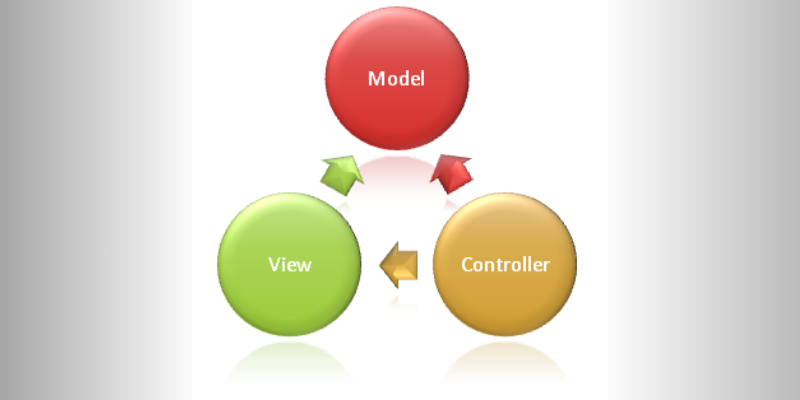
The Model-View-Controller (MVC) architecture is widely used in application development because it organizes code in a way that promotes separation of concerns, modularity, and scalability. When it comes to Oracle CRM solutions, implementing MVC architecture can significantly improve the user experience, streamline data handling, and make your CRM system more robust. In this blog, we’ll break down how to implement MVC in Oracle CRM applications and look at the benefits this structure provides.
For developers and companies working with Oracle, understanding how to use MVC can lead to more effective and adaptable CRM applications. Whether you’re planning to enhance your skills through Oracle Training in Chennai, mastering MVC implementation in Oracle CRM can be a game-changer.
Understanding the Basics of MVC Architecture
In the MVC model:
- Model: Manages the data, logic, and rules of the application.
- View: Presents data to the user and handles user interactions.
- Controller: Intermediates between Model and View, processing user input and making updates.
The MVC pattern separates the application’s data, UI, and control logic, enabling easier development, testing, and maintenance. This separation is essential for CRM solutions where large volumes of data must be processed, organized, and presented in a user-friendly manner. If you’re keen to dive deeper into developing MVC-based applications, MVC Classes in Chennai provides an in-depth understanding of how to organize code, set up models, and manage the flow between controllers and views.
Why Implement MVC in Oracle CRM?
Oracle CRM systems are used by businesses to manage customer relationships effectively. Implementing MVC in Oracle CRM can help:
- Improve code maintainability: Different components can be developed, updated, and debugged independently.
- Enhance data handling: MVC allows better handling of complex CRM data, from customer profiles to sales records.
- Support scalability: As the organization grows, the CRM can be easily extended with new modules or functions. To master these database interactions, consider Oracle Online Training, where you’ll learn best practices for schema design and database interaction.
Step-by-Step Guide to Implementing MVC in Oracle CRM
1. Setting Up the Model Layer
The Model is responsible for managing data, typically interacting with Oracle databases. In an Oracle CRM system, this layer would handle all customer data, such as contact information, transaction history, and preferences.
- Define Database Schema: Begin by designing the database schema, tables, and relationships that will hold CRM data.
- Create ORM Mapping: Using Oracle JDeveloper or similar tools, map your database tables to model objects. This process links tables in Oracle databases to classes in your application, making data access seamless. Core Java Training Institutes in Chennai can be a good fit to gain the necessary Java skills, as Java-based Oracle CRM solutions heavily rely on Java programming for controller development.
2. Building the Controller Layer
The Controller acts as an intermediary between the Model and View. It processes user input, updates the Model, and selects the appropriate View to display data.
- Define Controller Classes: Oracle CRM application, each module (e.g., customer profiles, sales tracking) will have its own controller class.
- Implement Business Logic: Controllers should contain business rules that define how data is manipulated in the CRM. For instance, if a user wants to search for a customer, the controller will access the Model to fetch relevant data. It then passes this data to the View for display. Looking to upgrade your skills, training in Oracle, MVC, and CRM systems can be extremely beneficial. Pursuing MVC Training in Chennai can provide the necessary expertise to build powerful, user-friendly CRM solutions that stand the test of time.
- Routing and Session Management: Controllers handle routing in your Oracle CRM.
3. Designing the View Layer
- Create User Interface (UI): Using HTML, CSS, and JavaScript, create responsive UIs that are easy to navigate and offer quick access to customer data.
- Integrate Dynamic Data Binding: Make sure that the Views can dynamically fetch and display data from the Model through the Controller, allowing real-time updates to customer profiles, sales figures, or support tickets. If you’re interested in front-end development and its role in architecture, Struts Training in Chennai can provide valuable insights, as Struts is a popular framework often used with Java and Oracle applications.
- Implement View Logic: Some interaction logic, like form validation, can reside in the View layer. Using JavaScript frameworks can make the View more interactive.
4. Testing and Debugging
Testing is critical to ensure the smooth operation of your MVC-based Oracle CRM system.
- Unit Testing: Test individual components (Models, Views, Controllers) to ensure they work as expected. Tools like JUnit can help automate this testing.
- Integration Testing: Verify that different components interact correctly. For example, check that a change in the Model layer correctly reflects in the View.
- User Acceptance Testing (UAT): Get feedback from end-users to refine the user interface and ensure it meets business requirements. Organizations looking to enhance can benefit from investing in Microsoft Dynamics CRM Training in Chennai, as it offers practical insights into CRM solutions that utilize the MVC framework.
Benefits of Using MVC Architecture in Oracle CRM
Implementing MVC architecture in Oracle CRM offers several benefits, including:
- Better Maintenance: With distinct layers, makes it easy to maintain and upgrade different parts of the application.
- Enhanced Scalability: As your CRM needs grow, MVC architecture allows you to expand or update features seamlessly. For those planning to develop CRM solutions, consider your skills with Oracle Course in Coimbatore, which delves into advanced Oracle database concepts, focusing on MVC framework intricacies.
- Separation of Concerns: Each layer has role, making easier for teams to work on different parts independently.
Expanding Your Skills in MVC and Oracle
In addition to gaining hands-on experience, formal training can significantly enhance your understanding of implementing MVC in Oracle CRM in Placement Training in Chennai often cover practical aspects of MVC and Oracle databases that can make you a more effective developer and prepare you for real-world applications.
